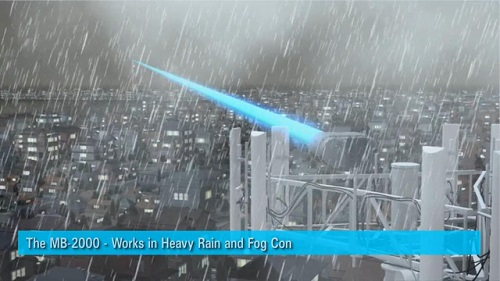In securities exchange game, execution speed is everything; as little as a nanosecond can have a dire impact on potential profits made from short selling. As a result, stock-market data centers ceaselessly hunt for the latest communication technologies that will reduce data transfer rates to as close to zero as possible. The newest infrastructure innovation uses lasers, similar to the kind used by U.S. military jets to communicate, to replace the existing millimeter-wave transmission system and fiber-optics.

Led by the Chicago-based communications company Anova Technologies, the initiative will first place lasers atop high-rise apartment builds, towers, and office complex along the 35 mile stretch separating New York Stock Exchange data center in Mahwah, New Jersey, and the Nasdaq Stock Market’s data center in Carteret, New Jersey. Once the phase is complete the firm intends to link nearly all U.S. stock exchanges.
High-frequency trading institutions have adopted numerous networking systems over the few years in their efforts to reach light-speed transaction times. Custom-built fiber optic cables came first, followed by microwave transmissions , and finally millimeter-wave transmissions. With microwave and millimeter wave transmissions already reaching near light-speeds, some question the redundancy of Anova’s proposed laser transmission system.

Anova’s laser transceivers are less affected by elements and birds flocks, unlike technologies using microwave and millimeter transmission methods.
Trading speed creates market efficiency
The company counter-argues that “laser guided” trading allows computerized trading firms to place their servers directly at the exchanges’ data centers to obtain news releases directly from the distributors, granting them an extra sliver of reaction time before the information is published via financial news outlets; securities have the tendency to instantly change the moment government issued economic data is released.
This is extremely beneficial to high-frequency traders who deal in bulk orders and react quickly to market news. Any technology that boosts the rate at which orders are issued results in higher liquidity, since investors can take a more bullish position and jump in and out of risky positions.
Government questions tech-arm race
Federal regulators at the Securities and Exchange Commission hold a contrasting opinion, believing that high-speed trading is a “key source of operational risk across all markets.” They fear that traders' chronic thirst for speed will spark another “flash crash,” as occurred on May 6, 2010, when enormous volumes of stock traded by high-speed traders caused wild price swings.
As of yet, it is unclear if the SEC can do anything to slow Wall Street's technology arms race. The agency considers ordering exchange houses to institute a “kill switch” to shut down any rogue trading algorithms threatening market stability.
Story via WSJ
Advertisement
Learn more about Electronic Products Magazine





